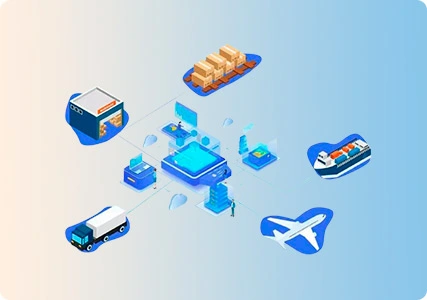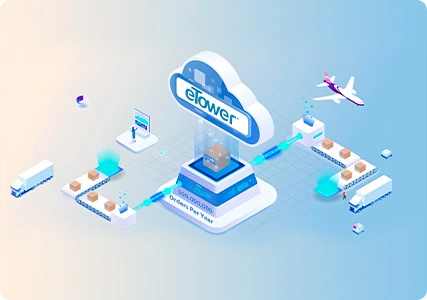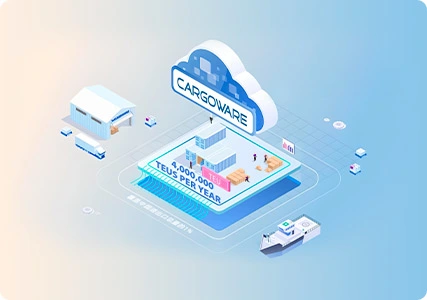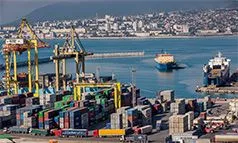
The post-pandemic era witnessed an unprecedented surge in the operations and expansion of logistics companies. This remarkable growth caught the attention of private equity firms, keen on investing in rapidly expanding enterprises, and business owners who saw the opportune moment to sell given the historically high valuations. However, various other factors exerted influence on the landscape of mergers and acquisitions, including the prevailing economic conditions. As outlined in a recent report from PwC, despite the prevailing economic challenges, organizations are being prompted to pursue inorganic growth strategies due to labor shortages and the inevitable expansion of e-commerce. While sellers remain attached to the previously established peak valuations of their businesses, buyers are factoring in recent declines in freight rates, coupled with the rise in interest rates and a series of concerning economic forecasts.
Here are a few trends to watch out for that will create a shift in the logistics sector for the upcoming year of 2023.
1. Elevated Integration Capabilities of Logistics Software
According to a recent study by IMARC Group, the global logistics market expanded to a valuation of US$ 5.2 trillion in 2022, with projections indicating a climb to US$ 6.8 trillion by 2028. This anticipated growth corresponds to a compound annual growth rate (CAGR) of 4.5% within the 2023-2028 timeframe. The strategic incorporation of IT services stands out as a paramount strategy for establishing a dynamic framework capable of supporting seamless operations. In a bid to extend their market presence, prominent entities within the logistics sector are engaging in mergers with or acquisitions of regional counterparts. Once these integration processes conclude, the unhindered flow of data between systems becomes imperative. The efficacy of logistics software hinges on its robust integration capabilities, enabling the frictionless exchange of information. By incorporating novel technologies, businesses operating in the logistics domain can not only gain a competitive advantage but also optimize expenditure. A pivotal facet in unlocking forthcoming opportunities resides in the capacity of technology to harmonize and fortify operational endeavors. This integrated prowess empowers Logistics Service Providers (LSPs) to attain heightened operational efficiency, curtailed costs, improved profit margins, streamlined paperless operations, and an elevated caliber of customer experience.
2. Fostering Collaboration as a Cornerstone of Sustainable Business
In an era marked by heightened environmental regulations and a consumer preference for environmentally responsible enterprises, the significance of collaboration cannot be overstated. The integration of supply chain data, tailored to the specific needs of the business, serves as tangible evidence of corporate adherence to regulations and dedication to ethical practices. According to the same Gartner survey, a notable 67% of participants affirmed that their respective organizations had delineated key performance indicators (KPIs) focused on environmental and social sustainability for supply chain leaders.
In this context, experts deem visibility and transparency to be imperative, categorizing them as essential requisites for organizations aiming to assert their environmental and social impact. These analysts underscore the necessity for organizations to not only establish comprehensive auditing protocols but also extend them to encompass suppliers and external partners. This holistic approach is essential for capturing the entirety of the influence exerted by their endeavors.
Embedded within the pursuit of sustainable business lies a compelling economic incentive. Projections from IDC researchers anticipate that by 2026, a significant 45% of G2000 enterprises will operationalize seamlessly integrated sustainability measures within their supply chains. This proactive approach will facilitate the effective documentation of impact data, culminating in a substantial 10% reduction in waste. This, in turn, augments their competitive advantage, positioning them favorably within their respective industries.
3. Mandate for Supply Chain Transparency and Collaborative Efforts
The intricate operations of logistics companies involve a multitude of dynamic components in constant motion. Maintaining order and effectively overseeing their operations necessitates real-time visibility into supply chains. This imperative calls for logistics companies to adopt measures that ensure seamless organization and management of their undertakings. A strategic avenue to attain this objective is through the strategic integration of Electronic Data Interchange (EDI) and Application Programming Interfaces (APIs). These technological synergies enable the harmonization of disparate elements, facilitating comprehensive insights into the supply chain ecosystem.
4. The escalating utilization of technology for monitoring sustainability metrics
Nations across the globe have set ambitious carbon credit goals in order to mitigate their carbon footprint and pave the way for a more sustainable tomorrow. Among the sectors contributing significantly to carbon emissions, logistics stands out, prompting corporate entities to establish their own sustainability objectives. In this pursuit, advanced technology comes into play, enabling these entities to monitor critical data points. These metrics encompass diverse factors, ranging from fuel consumption volume and reductions achieved through shorter route usage to the quantity of electric vehicles integrated into their fleet. These data-driven insights allow them to quantify their conservation efforts in terms of carbon credits saved.
When integration is done right, EDI and APIs work together to provide better supply chain visibility and can even help with onboarding. API integration gives deeper insight into logistics integrations within your digital ecosystem, while EDI helps start and orchestrate business processes.
For example, EDI can be used to kick-start the ordering, shipping, and fulfillment processes. APIs on the other hand can be used for shipment tracking, status updates, and inventory management. When used in tandem, the two technologies complement each other by providing an all-encompassing view of a business's supply chain and helping automate tasks. Automating tasks while increasing visibility helps companies to improve productivity, reduce errors, and grow revenue, all while having more control over their processes.
eTower is a cross-border e-commerce logistics collaboration platform software. Through logistics software integration, all labor divisions in the cross-border logistics chain can easily share data and work together efficiently and conveniently.
Logistics software SaaS services based on cloud computing help those logistics providers(3PL/4pl logistics companies) who have the heart and strength to quickly cut into the field of cross-border e-commerce, namely, connect and use, and charge on demand, so that logistics providers can focus on their areas of expertise without being bound by informatization.










